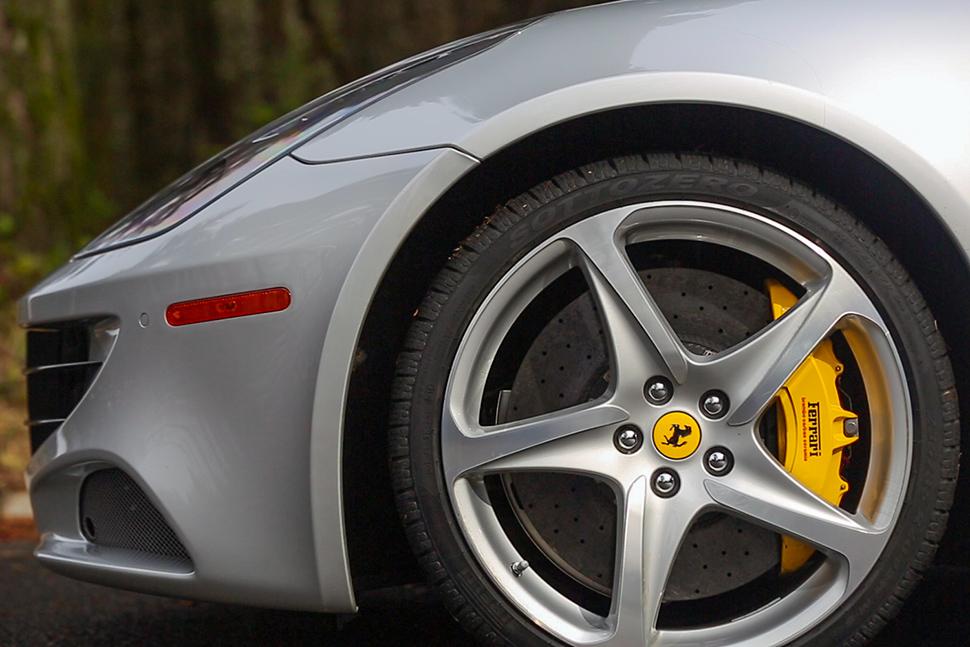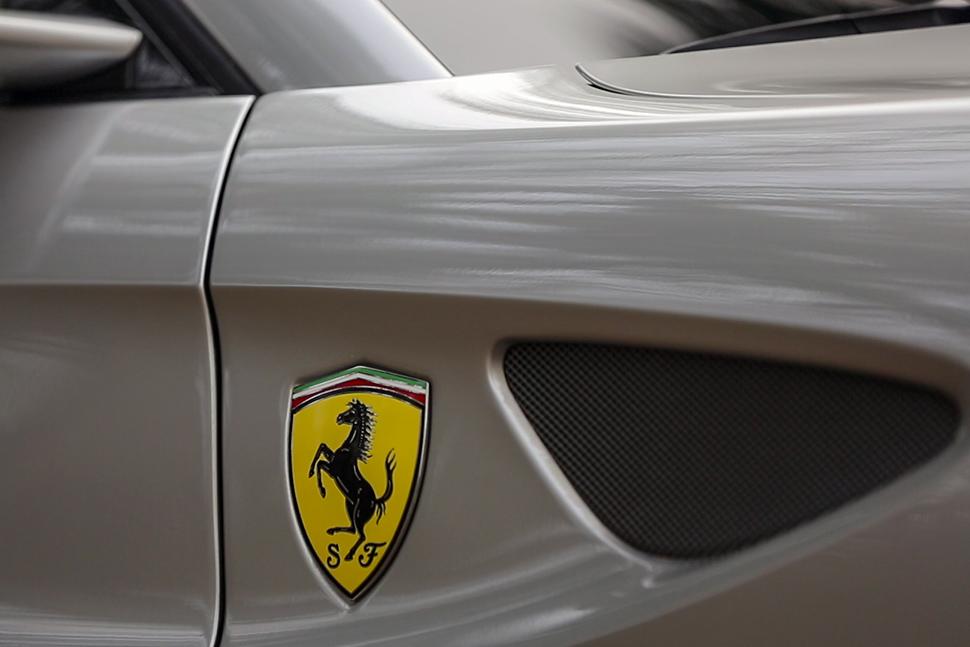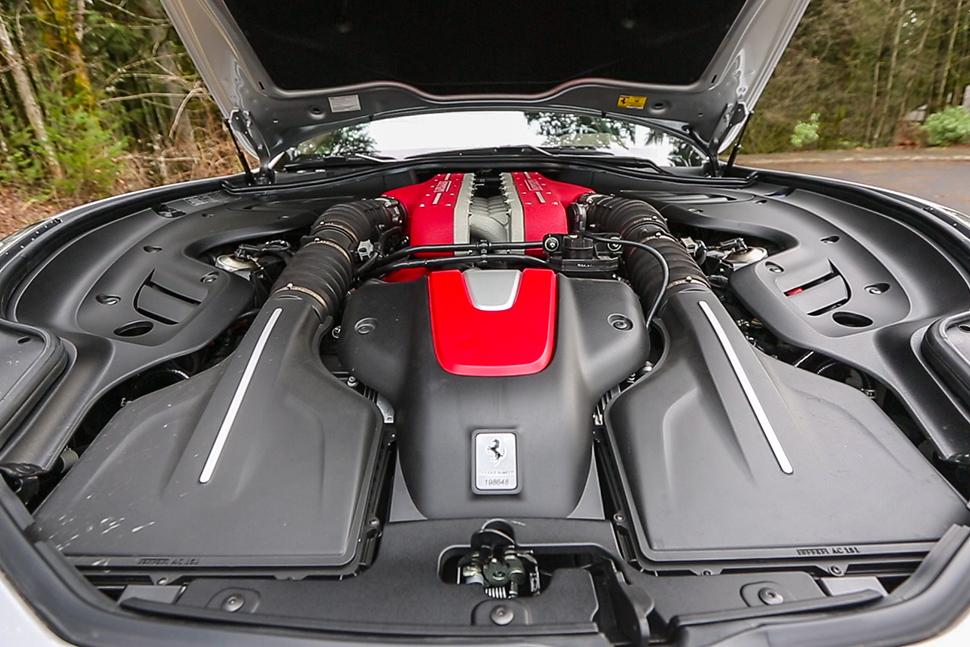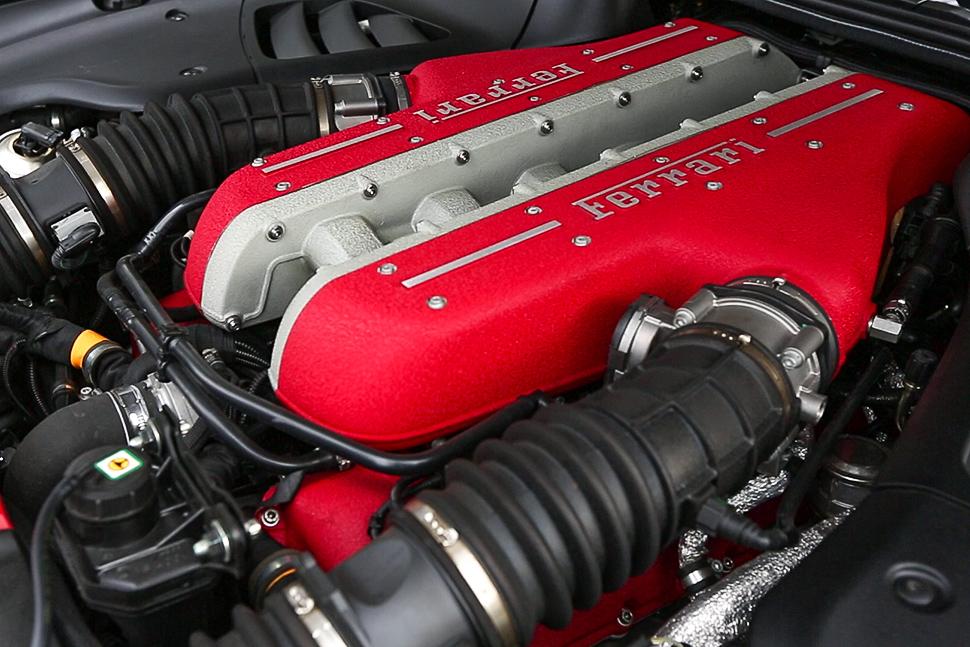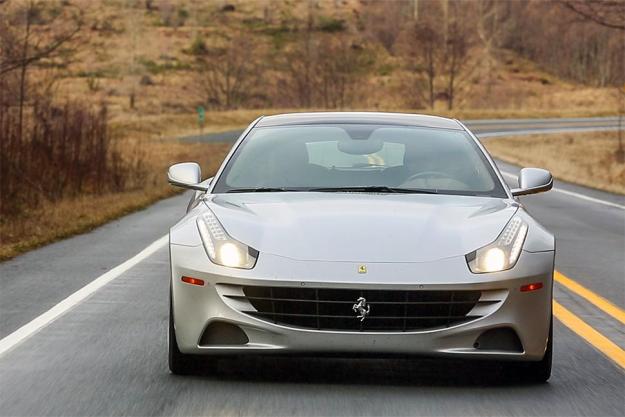
“Ferrari didn’t just go back to the four-wheel drive supercar drawing board to create the FF; it wiped it clean and created a whole new animal altogether.”
- Distinctive exterior styling
- Stunning cabin materials and design
- Room for many things, including four people
- V12 sound and acceleration
- Four-wheel drive with a rear-drive persona
- Dated infotainment
There are cars … and then there are Ferraris. I know it’s a cliché, but every car I have driven that bears the prancing pony badge has felt different, special. None more so than the Ferrari FF, a truly unique take on the grand-tourer breed, a vehicle type created for the most discerning and power-thirsty buyer.
Yes, there are other V12 grand tourers out there, like the Aston Martin Vanquish. And there are also all-wheel drive V12 supercars, too, like the Lamborghini Aventador. Each is a wondrous thing, in its own right. But each has shortcomings owners must overlook to truly enjoy the car. Not so, the Ferrari FF.
Unlike its relative competitors, Ferrari hasn’t simply added a supercar engine to a grand tourer or supercar kit to a luxury coupe; it’s literally reshaped what a four-wheel drive GT can look and act like.
Video review
By the numbers
Arguably, the FF is more than its figures. They, though, are nonetheless impressive, so let’s indulge, shall we? Under the hood, Ferrari has nestled its 6.0-liter V12 engine, which produces 650 horsepower and 503 pound-feet of torque, which is mated to a seven-speed F1 transmission, much like the 458 Spider. 0 to 60 is surpassed in around 3.6 seconds on its way to the 208 mph top speed.
When Ferrari says it worked hard to retain the rear-drive feel while also adding the versatility of four-wheel drive, it has.
Most normal four-wheel drive vehicles route power from one central gearbox out to all four wheels. In the FF, the front and rear wheels each have a separate gearbox. If that sounds complicated, that’s because it is. And, as I mention in my video review, explaining the system – called 4RM — properly would take longer than inventing it did.
Suffice it to say, though, that when Ferrari says it worked hard to retain the rear-drive feel while also adding the versatility of four-wheel drive, it has. That’s because the incredibly intricate system keeps the extra driveline weight low, close to the road.
I feel I should mention that Ferrari engineers actually conceived of 4RM in the 1980s but the technology to properly implement it didn’t exist until the mid-2000s. This, to me, proves the men in Maranello aren’t just grown eight-year-olds with a penchant for power, they’re also technical visionaries.
Driving
Even with its extra door and driveline components, the FF still drives like a Ferrari. Stomp on the throttle, look where you want to go, and the FF got there … fast.
When we shot the FF video, it was pouring quite heavily. Right before Christmas, I had taken a Lamborghini Huracan through the hills outside San Francisco in similar conditions. Though it, too, offers all-wheel drive, it couldn’t handle the saturated pavement. It was slipping and understeering all over the road. I couldn’t enjoy any of its 610 horsepower in any meaningful way. In fact, I ended up keeping pace with more plebian automobiles.
This, thankfully, was not at all the experience I had with the FF. I drove the dang thing like a mad man around Mt. Saint Helens in Washington State. Even down near freezing temperatures (it actually did snow for minute during the shoot) the FF never skipped a beat or made me worry I’d made a huge mistake taking a V12 Ferrari out in inclimate weather.
Shooting brake
The first distinction Ferrari made with its FF is the body. Don’t call it a hatchback; it’s a “shooting brake,” which is essentially a two-door wagon. It’s a polarizing design for sure. It’s also the first gift – aside from that sensuous, long hood — Ferrari designers gave its buyers: versatility. Unlike anything else in the GT range, the FF actually has room for things on the interior. And what an interior it is.
Not only is the FF interior downright cavernous, it’s also stunning to behold. The press demonstrator Ferrari sent to us was blessed with a brown leather interior accented by white stitching. Often in cars of this level, automakers are keen to cut power-zapping weight. Accordingly, the cars are fitted with stylish but slim cabins. Attention to details often comes in the form of keenly crafted carbon fiber bits and a thin smearing of leather over the hard seat frames – not enough to keep anyone comfortable for long periods of time.
The FF, by comparison, boasts Bentley-level cabin quality with a shout-y Italian flare only matched when the throttle pedal is mashed into the carpets. It’s quiet, comfortable, and fashion-forward, and especially well illuminated thanks to the panoramic glass roof. Honestly, it’s an astonishingly nice place to be.
The only downside to the interior on my press demonstrator was the extremely outdated infotainment unit. That said, CarPlay is available now for from Ferrari, so that should improve the user experience a bit. Right now, no supercar maker excels at in-car infotainment, so while the FF’s electronics are outmatched by a lowly Dodge Dart, it is as good as some of its six-figure competitors.
Only a V12
Only a V12 Ferrari could make such noise. While higher pitched and less gravelly than an Aston or Lambo, the Ferrari 6.0 is nonetheless scary. I proved this, in fact, when we were shooting the downtown intro of our review video. In order to coax Portlanders to gawk at the FF while the cameras were rolling (people get so camera shy), I would blip the throttle while pedestrians crossed in front of the car.
On several occasions, people seemed to think their life was ending for a split second. Or, at the very least, that I’d taken six to eight years off their hearing. Mind you, it’s not that loud — Portlanders were just being melodramatic. But it is loud.
And that loudness is a good thing. All too often cars are loud from outside but not as much in. At full tilt, on a windy road, I could have sworn the tailpipes turned inward to face the cabin, filling my ears with the roar of a billion dying hydrocarbons.
You know how they say that having a dog can increase your life expectancy by a few years? Well, I’m downright convinced the sound of a Ferrari V12 rolling through the rev range at wide-open throttle will do the same.
Hit the highway, click the gearbox up to seven, and the FF gets tomb quiet, which is a perfect match to the car’s comfort setting on the suspension.
Ride like no other
Of all the brilliant things of the FF, from the engine to all-wheel drive system to its sensuous cabin, the part that impressed me most was its suspension system.
To get to Mt. Saint Helens, the camera crew and I had to drive several hours north of our home in Portland, Oregon. On the way, we traversed freeways, highways, and ill-paved thoroughfares. Not one road or pothole perturbed the FF. This is impressive, but, honestly, many cars can claim such a feat.
I could have sworn the tailpipes turned inward to face the cabin, filling my ears of the roar of a billion dying hydrocarbons.
It was when I had to start driving like a lunatic during filming where the magnetorheological (no, I don’t know how to pronounce that either) damping system called SCM3 really shone brightest. With a flip of the steering wheel-mounted switch, the car immediately went from highway cruiser to hard and fast supercar.
And it was that sensation that really put the whole car into perspective for me. I’ve enjoyed 600+ horsepower supercars. I’ve enjoyed luxury cars with intricate interiors. And I’ve enjoyed cars that portend to live in two worlds — both sport and luxury — at once. None, though, did it like the FF.
It could quite literally be your comfortable daily driver with room for four, with which you set new lap records or drive to the ski resort on the weekends. Nothing I’ve ever driven can claim the same – at least with the same style, poise, and precision.
Highs
- Distinctive exterior styling
- Stunning cabin materials and design
- Room for many things, including four people
- V12 sound and acceleration
- Four-wheel drive with a rear-drive persona
Lows
- Dated infotainment
Editors' Recommendations
- Faraday Future FF91 first drive: Raw power
- Ferrari balancing performance and comfort as it enters the SUV segment

